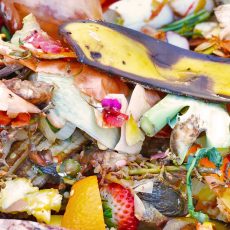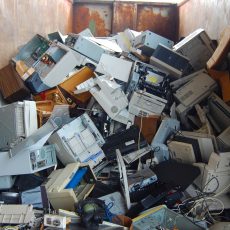This isn’t a question of the sustainability of the power source, ie., the sun. Obviously, there’s no concerns there. But the sun’s radiative energy doesn’t just spontaneously provide power to switch on the lights, it requires some pretty specific, technical hardware. And one thing we all understand, is that anything we humans produce has a usage expiration date. So today, let’s take a look at solar power and sustainability.
Read moreRecycling
Climate Change and Recycling: On a Journey to a Circular Economy

Striving toward a circular economy is slowly but surely climbing up on the agendas of all big countries in the world. Meanwhile, climate change and recycling are as popular topics as they have ever been. But for real change to take place in all three sectors, they need to be united and seen as a single entity. Only then will our planet have a fair chance at healing, and, thus, surviving.
Read moreMoving House? This is How You Can Do it Sustainably

What’s an eco-conscious sustainability warrior to do when faced with moving house? We’ve got some tips!
Read moreSustainable September

Depending on where you are in the world, fall or spring is in the air. But for us this month–and every month to be honest–’tis the season for sustainability. We decided to kick off our September by going back to school-style with the basics of how to get started living your most sustainable life.
Read moreIs Coronavirus going to cause a viral awakening?

Although there’s been plenty of images posted to social media by Fakey McFake and others, there are actually some real stories which demonstrate a silver lining to these unprec… uncer… downright scary times.
Read moreComposting with William Klimpert of Common Ground Compost

We have food waste on the brain. According to the Food and Agriculture Organization of the United Nations, an estimated 1.3 billion tons of food is wasted globally each year – one third of all food produced for human consumption. So, today, we’re talking with William Klimpert from Common Ground Compost about how to turn our waste not back into want not.
Read moreEating Local with Naama Tamir of Lighthouse

Today, we’re at Lighthouse Restaurant in New York City to talk sustainability and community with co-owner Naama Tamir! Occupying a triangular corner in Williamsburg, BK this sunny restaurant is indeed a beacon of light for sustainable dining out and reducing food waste.
Read moreDo the Rot Thing

We’ve talked about the staggering problem of food waste before. If you missed it, check out our article, “Farm to Table to Trash” and video, “Fighting Food Waste.” It’s difficult to imagine, but one third of all food produced for human consumption is lost or wasted, according to the Food and Agriculture Organization of the United Nations. And the Environmental Protection Agency estimates that more food reaches landfills and incinerators than any other single material in our everyday trash, constituting 22 percent of discarded municipal solid waste.
We’ve also talked about compost before, as something we can all do as individuals to deal with waste and live more sustainably, in general. But what we haven’t done is explain what compost actually is and how you can incorporate composting as part of your most sustainable life to reduce your carbon footprint. Soooo…
Read moreE-Waste 101

According to the UN University, every year the world produces approximately 50 million metric tons of electronic or e-waste. This includes computers, monitors, laptops, cell phones, TVs, stereos, kitchen appliances, plugs and cables, among other things.
Our ever-increasing demand for the newest, fastest devices and the latest technology, and retailers’ rush to provide, as well as stir this demand, has created what the Executive Director of the UN Environmental Program has called a “tsunami of e-waste rolling out over the world.”
Read moreWhere Your Computer Goes to Die…

Every year the world produces approximately 50 million metric tons of electronic or “e-waste” according to the UN University. This is more than the weight of all the commercial aircraft ever made, looks like 4,500 Eiffel Towers, is enough to completely cover an area the size of Manhattan, and is roughly worth $62.5 billion USD.
Read more